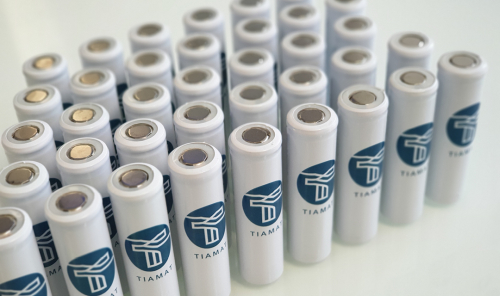The RS2E/Tiamat chemistry is based on a fluorophosphate Na3V2(PO4)2F3 (NVPF) cathode and hard carbon (HC) anode. Tiamat has introduced high-power cells in both cylindrical and prismatic cell formats.

Similar to other Na-ion cells, an aluminum current collector is used to replace copper foil at the negative electrode, which contributes to a reduced cell material cost. On the pack level, Tiamat has partnered with Plastic Omnium and Startec group to integrate Na-ion cells into modules and packs.
Now, a study by a team from Tiamat and ABB Switzerland has provided an experimental characterization of the commercial Na-ion battery cell developed by Tiamat. Both safety and performance evaluations were performed to offer a full perspective of NVPF/HC-based Na-ion technology and its competitiveness for power applications. The paper is published in the Journal of Power Sources.
The study uses Tiamat Na-ion prototype cells in a cylindrical 18650 cell format (Model NVPF-18650-PP7.1, version 2020). The cell has a weight of ∼34 g and a volume of ∼17 ml. The cell consists of NVPF cathode and HC anode, resulting in a nominal cell voltage of 3.7 V.
The cell has a capacity of 0.61 Ah, a specific energy of 68 Wh/kg, and an energy density of 135 Wh/L at 1C. The cycle life shows 1600 cycles at 5C charge and 5C discharge. More recent cell generations show improved cycle stability; the latest version cell achieves a cycle life of 3200 cycles at 2C charge and 5C discharge.
The cell showed excellent power rate capabilities up to 20C discharge and 10C charge. More than 90% of capacity and >80% of energy (compared to 1C) can still be accessed at 20C discharge.
Safety tests with different abuse conditions (overcharge, external heating, short circuit, and nail penetration) were performed. For all these abuse conditions, the specific cell version showed no thermal runaway.
Thus, the NVPF/HC-based Na-ion technology seems to develop towards a well-suited candidate for high-power energy storage applications.
—He et al.